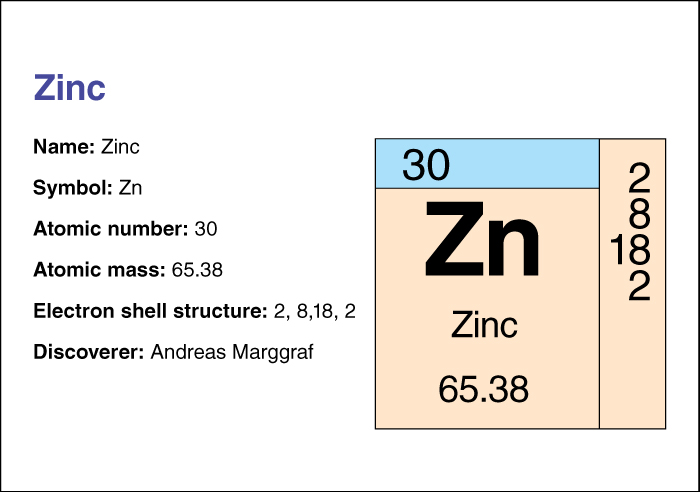Zinc, a chemical element, is a shiny, bluish-white metal. It is important in industry. Zinc can be worked into almost any shape using conventional metalworking methods. Such metals as iron and steel can be galvanized—that is, coated with zinc—to prevent rusting. Galvanized metal is used in such products as roof gutters and tank linings. Zinc is also used in electric batteries. Plants and animals require zinc for normal growth and healing. Zinc is also a component of the hormone insulin.

Zinc can be combined with other metals to form many alloys (mixtures). For example, brass is an alloy of copper and zinc. Bronze is copper, tin, and zinc. Nickel silver is copper, nickel, and zinc. Zinc is also used in solders (easily melted alloys used for joining metals). Zinc and its alloys are used in die-casting (forming objects from liquid metal in molds), electroplating (coating an object by using an electric current), and powder metallurgy (forming objects from metal powder). Since 1982, United States pennies have been made from a predominantly zinc alloy coated with a thin layer of copper.
Moist air tarnishes (discolors) zinc with a protective coating of zinc oxide. Once a thin layer of this coating forms, air cannot tarnish the zinc below it. White, powdery zinc oxide is used in making cosmetics, plastics, rubber, skin ointments, and soaps. It is also used as a pigment in paints and inks. Zinc sulfide, a compound of zinc and sulfur, glows when ultraviolet light, X rays, or cathode rays (streams of electrons) shine on it. It is used on luminous dials for clocks and to coat the inside of television screens and fluorescent lamps. When mixed with water, zinc chloride, a compound of zinc and chlorine, protects wood from decay and insects.

Zinc is never found in a pure state in nature. It occurs combined with sulfur in a mineral called sphalerite or zinc blende. Other zinc-containing minerals are calamine, franklinite, smithsonite, willemite, and zincite. Zinc is hard and brittle at room temperature. It is taken from its ores by heating them in air to convert them to zinc oxide. The oxide is heated with carbon to produce zinc.
Zinc’s chemical symbol is Zn. Its atomic number (number of protons in its nucleus) is 30. Its relative atomic mass is 65.39. An element’s relative atomic mass equals its mass (amount of matter) divided by 1/12 of the mass of carbon 12, the most abundant form of carbon. Zinc melts at 419.58 °C and boils at 907 °C. Chemists classify zinc as a transition metal. For information on the position of zinc on the periodic table, see the article Periodic table.
Alloys containing large amounts of zinc have been found in prehistoric ruins. In the 100’s B.C., the Romans made brass coins from ores containing zinc and copper. The first complete study of zinc was published in 1746 by Andreas Sigismund Marggraf, a German chemist.
See also Alloy; Galvanizing; Sphalerite.
